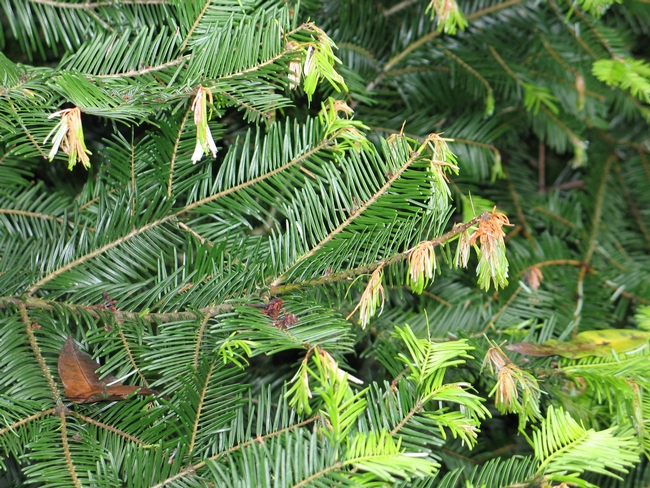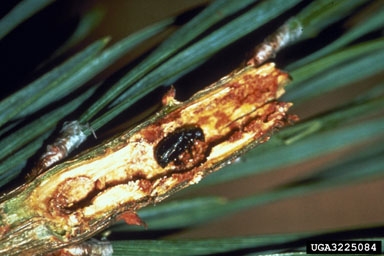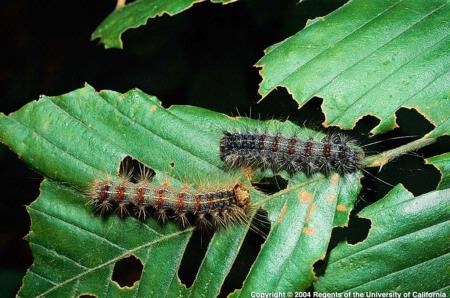
“Invasive insects, diseases and plant seeds can move on cut Christmas trees and other holiday greenery,” said Janice Alexander, UC Cooperative Extension forest health educator in Marin County. “These pests can escape out into backyards and neighboring forests to begin new populations, upsetting the balance of our native ecosystems. Proper purchasing and disposal of holiday greenery helps reduce that risk.”
Alexander recommends taking advantage of local tree recycling programs.

“You should not try to burn the wood indoors as fresh sap can create fire hazards,” she added, “and don't set the tree out in a backyard brush pile where pests and weed seeds could escape onto your property.”
“The most worrisome pests that might be traveling on Christmas trees or greenery this year include P. ramorum, pine shoot beetle and gypsy moth,” Alexander said.
The movement of some fresh trees is regulated. For example, Douglas fir trees are regulated because they are hosts for Phytophthora ramorum, which causes sudden oak death. The disease has killed millions of tanoak trees and several oak tree species in forests throughout California since the mid-1990s.

Pine shoot beetles, Tomicus piniperda, feed on shoots, stunting the growth of pine trees. Large populations of the insects can kill apparently healthy trees.
Gypsy moth, Lymantria dispar, attacks forests and landscape trees, including manzanita, western hemlock, Douglas fir and live oak. Gypsy moth caterpillars feed on hundreds of plant species and are capable of defoliating trees at an alarming rate. A single gypsy moth caterpillar can eat up to one square foot of leaves per day, according to the California Department of Food and Agriculture.

For more information about sudden oak death and forest health, visit Alexander's website at http://cemarin.ucanr.edu/Programs/Custom_Program816. More information about holiday greenery pests can be found at the USDA APHIS website and the Don't Move Firewood website http://www.dontmovefirewood.org/HolidayGreenery.